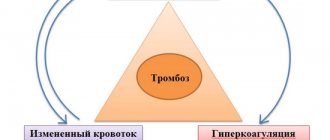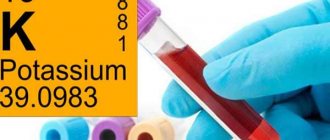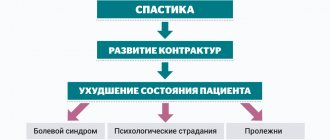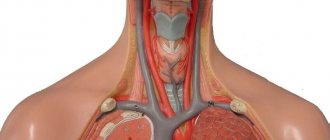Definition:
Myocardial revascularization is the restoration of the patency of the arteries of the heart (coronary arteries) through surgery.
Such operations include:
- Percutaneous coronary intervention (stenting, angioplasty). The main idea of these operations is to restore and maintain blood flow in the vessels. A stent is passed and placed into the heart arteries by first dilating the artery with a balloon. A stent is a thin metal wire tube. By expanding the artery and thereby increasing its diameter, the stent further preserves the lumen of the artery. This is a more gentle operation than coronary artery bypass grafting. It is performed under local anesthesia, without anesthesia.
- The coronary artery bypass surgery involves sewing additional vessels (shunts) to the ascending aorta, which will supply blood to the area of the heart suffering from a lack of blood and oxygen. Arteries located in the chest, veins in the legs and some other vessels are used as additional vessels. The operation is performed on a stopped heart, and the patient is connected to a heart-lung machine.
- An additional way to improve blood supply to the heart is laser revascularization of the myocardium. The operation consists of “burning” the myocardium (heart muscle) with a special laser in order to form small holes in it, which helps to increase blood supply to this area of the heart.
Complete arterial revascularization
The main trend in modern coronary surgery today is the direction of complete arterial revascularization without the use of artificial circulation in cases where there are no special contraindications. In the English-language literature, such interventions are designated by the abbreviation OPCAB (Off Pump Coronary Artery Bypass). Such operations have two main features: the use of only arterial conduits (shunts) instead of traditional venous ones, as well as the refusal to use artificial circulation at the main stage, which potentially has certain advantages. When carrying out such interventions, the equipment for performing artificial blood circulation is located in the operating room and can be used if necessary at any moment.
Complete arterial revascularization in most cases is performed using both internal mammary arteries, specially prepared using a technique called skeletonization. In rare cases, the gastroepiploic and radial arteries may also be used. At the Ural Institute of Cardiology, all patients must receive at least one arterial bypass, in 99% of cases this is the left internal mammary artery. The number of operations using two internal mammary arteries in our clinic is one of the highest in the Russian Federation and amounts to 53.4%.
Skeletonization is the only technique used to isolate the internal mammary arteries in our clinic. At the same time, all surrounding tissues, including satellite veins and nerves, remain intact. The undoubted advantages of this technique are low trauma, preservation of venous blood supply and innervation of the corresponding areas of the skin. Skeletonization also reduces the risk of infectious complications associated with bilateral bypass surgery, which is especially important in patients with diabetes.
For complete arterial revascularization, our clinic uses the technique of forming a so-called typical T-graft, when the correction corresponds to the natural location of the coronary vessels. In this case, the left internal mammary artery is not cut off from its source (used in situ) and is used to restore blood flow in the anterior descending artery of the heart - the main coronary vessel. The right coronary artery is used as a free graft, implanted into the left internal mammary artery at a right angle, which allows sequential revascularization of all branches of the lateral and posterior wall of the left ventricle of the heart. This type of revascularization restores the normal anatomy of the coronary arteries, and also avoids manipulation of the ascending aorta, which reduces the risk of neurological complications by an order of magnitude. Another modern technique is the use of both internal mammary arteries without cutting off (or cross-bypass), which significantly speeds up the procedure and reduces the interference of blood flow where necessary.
Interventions on the beating heart are absolutely safe, which is ensured by the use of special monitoring tools: direct arterial, venous, pulmonary pressure and pulmonary artery wedge pressure, as well as cardiac output and cardiac index using a Swan-Ganz catheter in all patients. It is also mandatory to use transesophageal echocardiography in such cases to determine myocardial contractility. To prevent intraoperative ischemia, intracoronary shunts are used in all cases when anastomoses are performed.
Surgeries on the beating heart make it possible to avoid the negative consequences of artificial circulation in patients with concomitant diseases of the central nervous system, lungs, liver, kidneys, as well as in elderly patients. Such operations are performed exclusively using disposable equipment, including vacuum-type myocardial stabilizers and cardiac apex holders, as well as intracoronary shunts.
Pumping heart surgery is primarily used for patients who do not require correction of valvular heart disease and other “open” procedures, however, in some cases, pumping heart bypass surgery is performed as the first step of the operation to reduce the overall time of cardiopulmonary bypass.
Indications for revascularization
Restoring the blood supply to the heart surgically is performed if there is no effect (or insufficient effect) from taking drug therapy. The choice of myocardial revascularization technique is a complex, integrated approach based on an assessment of the patient’s condition, the characteristics of coronary artery lesions, concomitant diseases, the complexity of the postoperative period, etc.
To determine the indications for a particular treatment method, it is recommended to undergo a full cardiac examination. We use modern equipment techniques, which allows us to minimize the risk of complications after operations.
If you have discovered some, even minor, signs of cardiovascular disease, do not put off visiting a doctor until later. If you need to see a cardiologist, you can do this online on our website.
Transmyocardial laser revascularization: data from histological examination of the myocardium
Back to program
Artyukhina T.V., Serov R.A., Tretyakova N.A., Pomazanova E.A., Semenov M.Kh., Berishvili I.I.
FSBI NTsSSKh im.
A.N. Bakulev RAMS; The original hypothesis for the effectiveness of TMLR assumed the presence of patent channels providing direct blood flow from the LV. Today, the physiological and hemodynamic inconsistency of the initial hypothesis of the effectiveness of TMLR has already been definitively proven. With the undoubted success of TMLR operations in patients with diffuse damage to the coronary artery, other factors obviously influence the effectiveness of the procedure, such as myocardial damage: thermal and mechanical, etc. Purpose of the study: to study the morphology of the myocardium around laser channels after transmyocardial laser revascularization, including and after using various laser systems. Materials and methods: at the Scientific Center for Surgery named after. A.N. Bakulev studied 28 hearts of patients with coronary artery disease aged 56-67 years, who underwent TMLR and died 1-96 days after surgery. The patency of laser channels created by various laser installations was studied. CO2 -24 hearts, XeCl -2, semiconductor-2. 24 hearts were studied from 0 to 30 days, 4 heart specimens were studied from 30 to 96 days after surgery. Blocks of myocardial tissue for morphological study were taken from the area of laser perforation or the area of myocardial bypass and processed in a double way: enclosed in paraffin, secondly, frozen to 82 degrees petroleum ether. Results: when studying the hearts of patients who died on the operating table and during the first day after surgery, it was revealed that the laser channels were passable and filled with blood and myofibril components. When studying the hearts of patients who died 9-96 days after surgery, the lumen of the laser channels was completely closed. The channels formed using a CO 2 laser had a pronounced zone of thermal damage to the myocardium surrounding the laser channel. The channels perforated by low-energy lasers had a small zone of thermal damage and a significant zone of mechanical damage surrounding it, represented by cracks in the myocardium perpendicular to the axis of the channel. The length of this zone noticeably exceeded the diameter of the channels. In periods of 15 days and above, a zone of angiogenesis was determined around the canals, which was more pronounced after the use of a CO 2 laser. Conclusions: the channels broken during TMLR are closed within 1-5 days. The difference in the effectiveness of TMLR performed using different lasers should obviously be explained by different degrees of thermal and mechanical damage to the myocardium. When using a CO2 laser, thermal damage to the myocardium prevails; when using low-energy lasers, mechanical damage prevails.
results
Immediate mortality (in hospital or in the first 30 days) after combined CABG and TMLR was 1.6% (1/60). The cause of death was multiple organ failure. According to our data, the mortality rate was lower compared to the data given in the literature (1.6% versus 6.3%).
Postoperative complications are presented in table. 2.
Table 2. Postoperative complications (in hospital or within 30 days)
3 (5%) patients experienced rhythm disturbances (atrial fibrillation), which were treated with medication. The postoperative period in these patients was uneventful, and they were discharged from the hospital on time.
All patients were extubated on the 1st day after surgery. The length of stay of patients in the intensive care unit was 2.2±0.7 bed days. The use of intra-aortic balloon counterpulsation was not required in any case. The total length of hospitalization was 11.1±2.9 bed days. Before discharge, LVEF increased from 48.8±4.97 to 54.9±4.08%.
Thus, analysis of the immediate postoperative period showed that TMLR is quite safe for the patient and does not require an expansion of the standard volume of intensive care in the intensive care unit.
Long-term follow-up
Clinical follow-up of patients in the long-term period was carried out 3, 6 and 12 months after surgery and then selectively up to 10 years after surgery (on average 7.5±0.9 years). At each interval, patients underwent clinical and instrumental examination. The clinical status of the patient was assessed based on the dynamics of angina FC and treadmill test. Transthoracic echocardiography was performed to monitor the effect on global and segmental myocardial contractility.
The dynamics of angina FC in patients after combined CABG and TMLR are presented in the figure.
Dynamics of the functional class of angina before and after surgery.
All patients were admitted to the clinic with an initially high angina FC. By the 12th month after surgery, a sharp decrease in angina FC was detected. This trend was followed up to 5 years, then a slight increase in angina FC was noted, which required an increase in nitrate intake.
All patients showed an increase in exercise tolerance after 12 months of observation.
In the long-term period, on average 7.5±0.9 years after surgical treatment, 2 patients required treatment for angina (percutaneous transluminal coronary angioplasty was performed), which is associated with the progression of the atherosclerotic process in the coronary vessels.
Survival rate after 7.5±0.9 years was 91.6% ( n
=55).
conclusions
The widespread prevalence of coronary heart disease and the high risk of complications and death of patients contributes to the use of radical treatment methods. Methods of revascularization of coronary vessels make it possible to restore normal blood supply to the myocardium. The “gold standard” for providing care for acute coronary syndrome with ischemia of the heart muscle is placing a stent into the lumen of the affected area. All interventions are performed exclusively by cardiac surgeons, taking into account the patient’s indications and contraindications.









